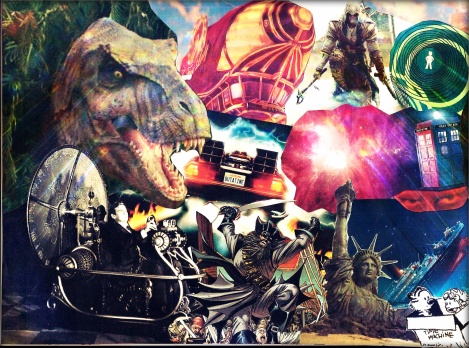 I haven’t written too much from the full point-of-view of an actual mom, so I’m putting out there a seemingly delusional personal philosophy in child rearing from the “fanparent” perspective:
I haven’t written too much from the full point-of-view of an actual mom, so I’m putting out there a seemingly delusional personal philosophy in child rearing from the “fanparent” perspective:
TIME TRAVEL IS THE BEST WAY TO GET YOUR KIDS AND YOURSELF EXCITED ABOUT HISTORY.
I probably need to clarify this a bit so I don’t sound too insane. I don’t literally mean time travel — although I wish I did — I mean using the concept as a tool to learning in which everyone in the geek culture can get behind.
Here, based on my extensive research (of my own family), are some of the benefits of time travel as opposed to standard classroom learning:
- It’s hands-on! I’m a booklover, but if I had the option of reading about a historic era or actually going there, the answer would be a no-brainer. The American Civil War is, frankly, a boooooring read (to me, at least), but watching re-enactors (who are essentially historic cosplayers) give me a living history demonstration in a historic fort all of a sudden brings the past to life. We can see, hear, and even smell how they lived, what they wore and ate, how they entertained themselves and why both sides of the war believed what they believed. We aren’t just “learning” about it. We are experiencing it.
- It’s approachable. Ask your 13-year-old to tell you everything they know about the American Revolution…then watch the splendor as the light in their eyes turns temporarily off while they try to find an interesting talking point. Now, ask him what “hidden secrets” he learned about18th century Boston, the Mohawk Indians, and the aforementioned American Revolution by traveling back in time with Desmond Miles in “Assassin’s Creed III.” The answers — and questions about what is “actual history” will come much easier.
- It’s conversation evoking. No need to really explain this one. Just ask your kids (or anyone) where and when they could go if they had the opportunity, and dinner or car-travel conversation will be dominated for at least an hour.
- It’s extremely, incredibly fun. How could pretending to be a Time Lord or post-modern dinosaur hunter not be a blast? Through the beauty of “armchair” time travel, there is no place, time or era you can’t visit as a family. Paint a cardboard box blue and create a Tardis with your kids or go even easier and write “Time Machine” on a box ala Calvin and Hobbes. Get in and go places. It’s that easy…and addictive.
How about geek-friendly study aids? There are countless “time-travel” related movies, television shows, books and comics that might help get a discussion rolling and “accidently” turn into a leaning opportunity.
There are so many books and comics that deal with time travel, I’m hesitant to try to list just a couple. I recommend perusing your long boxes and book shelves, as you are certain to run across everything from Madeleine L’Engle’s young readers science fiction classic “A Wrinkle In Time,” Mark Twain’s “A Connecticut Yankee in King Arthur’s Court,” and H.G. Well’s disturbingly-better-than-any-movie-adaptation story the “Time Machine” to any number of DC “Elseworlds” titles and other “Oh no, I’ve fallen through a rift in time/space continuum” stories (most of which I admittedly enjoy).
Here are a few more worth a look:
Magic Tree House series by Mary Pope Osborne. For beginning chapter book readers, this is a straight-forward time travel series in which a pair of normal kids, Jack and Annie, end up getting sent on adventure after adventure to different times and places of historic significance, as well as some completely fictional locales. The best thing about these from a learning standpoint is many of these books have nonfiction companions (for example there’s a book on actual facts about the Titanic as a go-with for the fictional “Tonight on the Titanic” story). Also, readers who get into this series can get a printable “passport” on Osborne’s Magic Tree House site, and after reading each book they answer simple online questions to be awarded a “stamp.” This was my daughter’s favorite part of these books and couldn’t wait to collect her “stamp” rewards.
“Harry Potter and the Prisoner of Azkaban’ by JK Rowling. Of all the books in the Harry Potter series, this is the only one that really deals with a time-travel element, as Hermione’s time turner, originally used so she could take two or more overlapping classes, becomes the object that helps improve the fate of Buckbeak the hippogriff, Sirius Black and Hogwarts in general. Even “short hop” time travel can bring up the question “If you could fix a past mistake, what would it be and how would you do it? A hilarious take on this same concept is through the movie “Galaxy Quest” and its Omega 13 device that can shoot time back 13 seconds.
Product placement: You can pick up a cheap time turner kit by Running Press at pretty much any book store for around five to seven dollars. This makes a cool learning prop. If you can’t find one, use an egg timer or make your own “time travel” device.
Eric Flint’s “1632 series.” Flint is up to his 12th book in the popular alternate history series, in which an entire town in West Virginia gets transported back in time to Central Germany during the onset of the Thirty Years’ War. From a readers’ standpoint, this is an exciting departure from the standard “fish out of water “ scenario of one (or a few) individuals getting whipped out of their linear time comfort zone. When a whole town has to band together to keep from getting overrun during a historic conflict, it can get pretty crazy. Chronologically, the books begin, appropriately with “1632,” but Flint himself doesn’t even feel they need to be read in order.
“Whenever someone asks me ‘what’s the right order?’” for reading the 1632 series, I’m always tempted to respond: ‘I have no idea. What’s the right order for studying the Thirty Years War?’’” he says on his webpage.
And, here’s two comic book picks:
Astro City ½ special: “The Nearness of You” written by Kurt Busiek, art by Brent Anderson. One of the only comic book stories that had me sobbing like a baby at the end, as it deals with a man plagued by dreams of a woman he has never met, but can’t get out of his head. With the intervention of Astro City hero Hangman, he learns this was to be his wife, but a super-hero style battle that involved a link to the past resulted in the death of this woman’s ancestor…and hence the prevention of her very existence. I won’t tell you the ending if you haven’t read it but it brings up the classic talking point of how history would be altered if just one thing were messed with in the past (aka the “butterfly effect”). Example: “What if your parents were prevented from ever meeting? Hello, McFly.”
Ray Bradbury fans could also reference his fantastic 1952 short story “A Sound of Thunder” in which a “time travel” excursion to hunt dinosaurs goes horribly wrong…just because someone stepped on a butterfly.
“Batman: The Return of Bruce Wayne” by Grant Morrison, with various artists. This six-issue series (now available as one graphic novel), is the ending story arc to the “Batman: RIP” story in which Bruce Wayne has to travel from era to era to get back to present day Gotham City. The “pirate” adventure was my personal favorite. The artwork varies in quality and style, but the story is continuously intense. This brings up a question of how certain historical figures — or even people in our own lives — might be different if they existed in different eras. I posted an artists’ “Old West” depiction of DC characters online once that included Batman with a pair of side arms. This sparked a “Batman would NEVER use guns” vs. “a Wild West era Bruce Wayne might” debate. This is just one of the many topics this type of series could tap into.
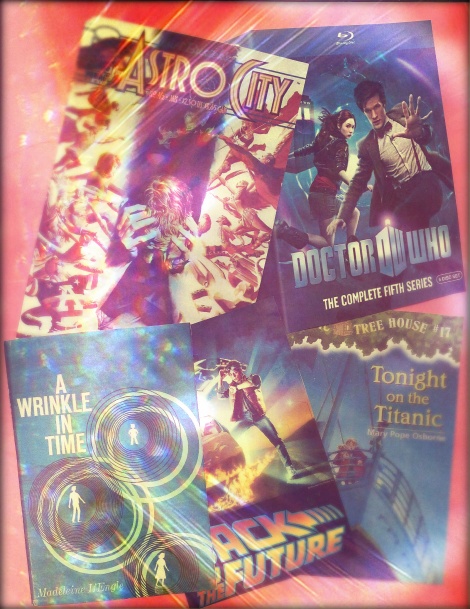 As for movies and television, I’m not going to attempt to re-explain these famous flicks and shows, but I will offer some “family movie night” discussion points.
As for movies and television, I’m not going to attempt to re-explain these famous flicks and shows, but I will offer some “family movie night” discussion points.
For Doctor Who (BBC Series): Since London seems to always be a “home base” for the Time Lords, what are some of the major changes this historic city has seen over the years? “Big Bang Theory” character Amy Farah Fowler brought up a similar query once to which she met with much chastising.
For the “Back To The Future” Trilogy: What do you think would happen if different versions of yourself accidentally met, and how would this change your view of yourself? Also, the Flux Capacitor may be a famous part of movie history, but what do you think would be needed to make a car…or any machine…travel through time? Is it even possible?
For “Planet of the Apes” (any version): Do you think humans will ever fall from the top of the food chain? What are your views on this weird take on evolutionary progress? What do you think would trigger this type of change? Heavy questions, but they might provoke some very intelligent answers.
For Terra Nova/Primeval: The idea of a “rip in time” that leads to past and future dimensions is pure science fiction, but would it ever be a good idea for dinosaurs and other pre-historic beasts to occupy the same planet with modern man? If “Jurassic Park” and “Land of the Lost” are any indication, my assumption would be “no, probably not,” but your kids my have a different — and likely better — response.
For “The Terminator” and “Looper” (for older teens, of course): If your future self were to come back to today, what advice would do you think he or she would give you? Do you look good, or did you let yourself go. Even if your kids aren’t old enough to see these R-rated films, you could still bring up these questions.
I also offer a quick note to the gaming crowd. I’ve long felt that one of the best ways to teach your kids of all ages about responsible gaming is to:
1) Limit it to a certain days/hours (I know, I’m evil), and
2) Play the games with them. Hand me that controller.
I especially stand behind the second reason because I not only have an excuse to play video games, but the digital interaction during game play prompts actually socializing with your kids…and also acts as a great bridge to sneaking in some learning tools (see my earlier reference to “Assassin’s Creed”).
For kids age 10 and older, I recommend giving “Final Fantasy XIII-2” (the Japanese-made sequel to Final Fantasy XIII, of course) a try since it deals with the classic “going back in time to fix the past” scenarios. Players are given the opportunity to visit the same location at different eras in time, making this a great place for parents to hop into discussing how places change over time. Ask them what they think their hometown looked like 30, 300, 3,000 or event 3,000,000 years ago and what changes are happening today that might effect it in the future.
For late high school and older players, “Bioshock: Infinite” is one of the most visually inviting games available today. Not dealing overwhelmingly with time travel (except for those nasty tears in time and space), it is an interesting “alternate history” looks at the turn-of-the-century America with stylized steampunk references to many of the ideologies (the emergence of American exceptionalism), entities (the Pinkerton Agency) and events (1893 World’s Fair, aka Chicago World’s Fair) of the time. There is extreme violence and some pretty horrific images, though, so younger players should steer completely clear of playing this. However, I do suggest finding some of the less brutal art surrounding this game online or in magazines and talk about the architecture, fashions, advertising and technology of this era…especially how to separate what is based on historic fact, what may be heavily inspired by it, and what is solely the product of a creative mind. Really, this is for older teens getting ready to go off to college where they will knock personal philosophies and beliefs back and forth like tennis balls, the reference to politics, religious practices and personal freedoms. College can be a great place to both find and lose oneself, so use this game as a chance to bring up some of those touchy-feely value-driven topics.
I hope these stepping-off points in embarking on a trip through time helping kids to discover these fictional approaches to history reveal a past made up of “real” people involved in “real” events in “real” places. Who knows, you may even learn a few new things yourself.
Lisa Kay Tate
Staff Writer and resident geek mom


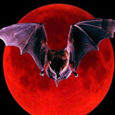
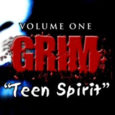

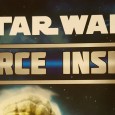
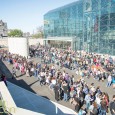
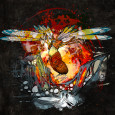








Another thing that might work quite well, depending on your kid’s brain and interests is counter-factual history. Nothing has helped me understand history more than a series of books (Called What If, if I’m not mistaken) that ask the question how history would have differed if, say, Hitler had been shot during World War I. And so on. Sometimes very differently, other times not because the march of time was so strong.
GREAT idea. I love “What Ifs”
Thanks Eric,
You’re right. The “alternate history” concept is a great genre. There’s a historian named Robert Crowley who edited some cool compilations. I think those were called “What If..” If those are what you are talking about, great recommendation. If not, I’d love to hear some more choices as well.
On the comic front Marvel’s “What Ifs” have been running since at least 1977 and take some interesting concepts in the Marvel Universe.
Yeah, I’m pretty sure we’re talking about the same books. As for comics – I recently read Superman: Red Son (http://www.comicpow.com/2013/05/02/exploring-what-defines-superman-through-differing-worldviews/) and I think that one is pretty awesome.
This was a lot of fun to read, Lisa. Awesome ideas.
Thanks. Always looking for more suggestions! Such a fun subject.